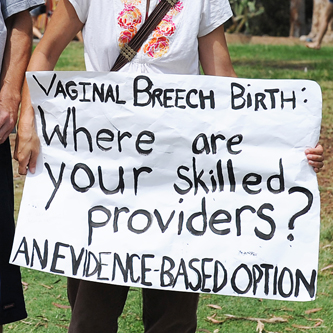What is breech?
A breech baby is a baby that has its head up and the part of the baby presenting in the pelvis can be a bottom, feet/foot, or knees. The most common breech position is called “frank breech.” These babies are folded in half with their feet up closer to their head and their buttocks presenting in the pelvis.
What are some of the reasons a baby would be breech?
- Gestational: breech is more common early in pregnancy. By 38 weeks, only 3-4% of babies are breech.
- Maternal: shape of the uterus (bicornate, unicornate), soft tissue obstructions (ovarian cysts, fibroids, placenta location), low amniotic fluid volume (may prevent ability to turn), thyroid issues.
- Fetal Causes: cord around baby’s neck or body restricting ability to flip, congenital problems (heart defects, hydrocephaly, Downs Syndrome, Brittle Bones Syndrome), twins or multiples.
- A normal variation of pregnancy
What variations are there?
- Frank breech – Hips flexed, knees extended (pike position)
- Complete breech – Hips flexed, knees flexed (cannonball position)
- Footling/incomplete breech – One or both hips extended, foot presenting
Why is breech so controversial? What is the big deal?
Breech birth occurs in only 4% of the population, so they aren’t that common. One percent (1%) of those births with doctors are surprise breeches. Until the turn of the century, doctors and midwives were assisting or delivering breech babies vaginally. Traditional midwives before that also knew tricks of turning babies or watching breech be born or knowing when to assist if necessary. Different studies and research papers during the 20th century have led to varying belief systems about breech birth. See timeline for these studies (OB Timeline- Breech). For more information, including that of updated studies since 2010, go to the research portion of this website.
The most influential breech study to date that has affected the obstetrical culture of breech birth was the Hannah study of 2000 called the Term Breech Trial (TBT). This study was stopped in the middle and not completed as it was seen as too dangerous to continue. The initial results were showing cesarean birth to be much safer than vaginal birth. Later, the follow-up studies (here, here, and here) found both vaginal and cesarean to be just as safe for the baby with a skilled provider, and obviously, a vaginal breech birth is statistically safer, long-term, for the birthing person. Also, many midwives, doctors, and statisticians began to unravel the inherent flaws of this study (see the attached bullet points for more information). Most care providers in the US, Canada and Europe (minus various pockets of OBs and midwives and the Dutch in their larger PREMODA study) shifted their perception of vaginal breech birth to being quite dangerous. In fact, many medical schools discontinued teaching the art of vaginal breech birth. Many doctors have never seen a vaginal breech birth.
Where are our vaginal breech skilled providers?
After results came back that the TBT wasn’t a quality study, Canada and the UK began to create programs that would rectify the lack of skilled providers after realizing they no longer had skilled vaginal breech providers. The American College of Obstetricians and Gynecologists eventually released the recommendation that a vaginal breech only be offered when a skilled provider is able to be present. They gave no recommendations for how to change the fact that few skilled providers are available.
In fact, there are documented skilled providers who want to provide the service of a breech birth but have been told by hospitals that they are not allowed to provide such services out of the standardization of care between hospitals.
No matter what a person desires in their birth, parents deserve to have the ability to choose a vaginal or cesarean birth AND have a skilled provider. If you are interested in letting people know about creating such a change, click here.

